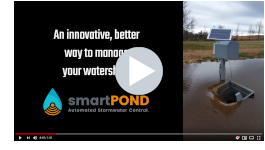HELLO,
We have curated some of the top news stories in the stormwater industry from this past month, as well as a few other items of interest. We appreciate you taking the time to read our ezine and hope that you find this stormwater related news as interesting and informative as we do.
Sincerely,
The Construction EcoServices Staff


 In anticipation of its future growth, the City of Ennis, along with MESA Design Group and Construction EcoServices developed a plan to serve as a road map for future development and economic revitalization. Dominated by vehicles, Dallas Street currently offers very little to the pedestrian experience. The design included an alley of Princeton American Elm trees along the street, providing a cathedral like corridor of cool dappled shade in the hot summer months, and allowing warm sunlight through in the cool winter months.
In anticipation of its future growth, the City of Ennis, along with MESA Design Group and Construction EcoServices developed a plan to serve as a road map for future development and economic revitalization. Dominated by vehicles, Dallas Street currently offers very little to the pedestrian experience. The design included an alley of Princeton American Elm trees along the street, providing a cathedral like corridor of cool dappled shade in the hot summer months, and allowing warm sunlight through in the cool winter months.